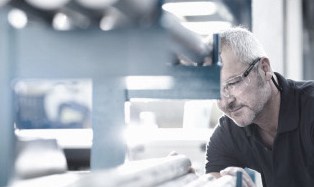
Whether functional under extremely high or low temperatures, effective in corrosive environments or designed for special dynamic or static loads: form springs can also be adapted for extreme applications. Appropriate materials and surface treatments as well as, of course, special know-how also bring solutions where you would not necessarily expect them.
Contents
The be-all and end-all is the choice of the right material for the spring in its special application. The material primarily determines whether the solution can be implemented. As a rule, selection is made for electrically conductive, non-magnetic or corrosive properties, but often also for high and low temperature properties.
Depending on the application, different materials are available:
The modulus of elasticity and the sliding modulus are examined and tested to determine whether certain materials provide the desired force and return to their original shape after the load has been reduced. For the correspondingly large elastic range, which is required for special applications, high elasticity limits as well as often low relaxation properties in the case of elevated temperatures or large temperature fluctuations must be given.
In addition to the above requirements, special shaped springs must also offer high deformation capacity, fatigue strength and smooth surfaces, depending on the application. Under mostly extreme conditions, the materials must have constant material properties, which can even be used in space or in passenger jets.
In the event that certain material properties are required but are not available with the "raw" material, additional surface treatments are available, which, for example, increase corrosion protection or strength or influence electrical conductivity.
Only the totality of all criteria makes a shaped spring what it is. Although the choice of material is a key criterion for solving problems in extreme cases, the application-specific combination of other decisive criteria determines how efficiently the solution works.
The spring design and the type of spring, the winding design and the surface treatment must be combined, and finally also the spring design according to proof of strength and function. The functionality of a highly specialized form spring only becomes apparent when all of the special properties interact.
The procedure here does not differ from the process that is also usual for products for less spectacular purposes. The form spring is ultimately optimally designed for the available space.
Determination of:
After this, proof of function and strength can be carried out. Both tests simulate extreme applications beyond the required level and thus ensure the perfect function of the spring in continuous use.
From the wealth of information above, it is clear that producing special shaped springs is a fine art. Developing and manufacturing an individual spring construction for extreme use requires know-how and experience.
When it has to be made to fit: Many years of experience from many customer projects in a wide variety of industries enable us to quickly understand the tasks of our customers. Contact us – it always makes sense to ask us for a solution.
Bitte geben Sie hier ihre Suchanfrage ein:
